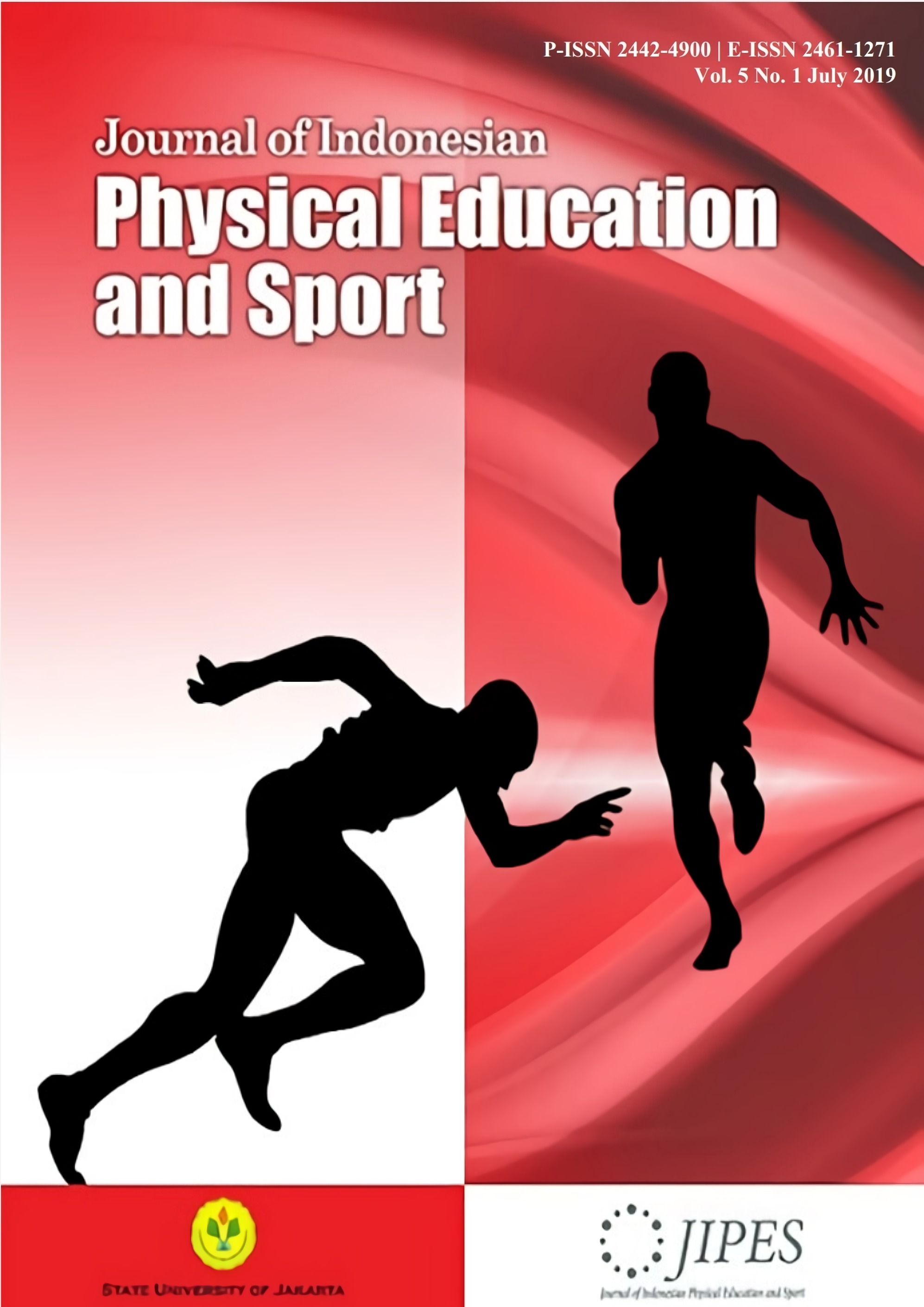The Influence of Exercise Model Using Video Media on Swimming Grabstart Skills for Deaf Children
DOI:
https://doi.org/10.21009/JIPES.051.03Keywords:
Keywords: training model, video media, grabstart swimmingAbstract
The main problem of the research is the low mastery of the skills to start swimming deaf children. The purpose of this study was to determine the effect of the exercise model using video media on swimming grabstart skills in deaf children.Subjects were 40 deaf children consisting of 20 experimental groups and 20 control groups. Data collection was carried out by conducting initial tests to grabstart swimming skills, practice (training models using video media) and final tests of grabstart swimming skills. Data analysis and hypothesis testing using comparative analysis techniques using the Dependent sample t-test, namely Paired sample t-test and Independent sample t-test, namely t-Test: Two-Sample Assuming Equal Variances with a significant level α = 0.05Based on the results of the study it can be concluded that: 1) There is an effect of the exercise model using video media on swimming grabstart skills in deaf children from an average value of 51.05 to 64.94 with Tcount = 14.93> Ttable = 2.10, 2 ) There is an influence of the control group on swimming grabstart skills in deaf children from an average value of 47.89 to 52.69 with Tcount = 4.47> Ttable = 2.10. 3) There is a difference between the effect of the exercise model using video media with a control group with Tcount = 3.82> Ttable = 2.02.
References
Bompa, T., & Haff, G. G. (2009). Periodization Theory And Metodolgy Of Training. Human Kinetics
Bompa, T., & Haff, G. G. (2009). Periodization Theory And Metodolgy Of Training. Human Kinetics
Budiningsih, A. (2010). Berenang Gaya Bebas. Pura Barutama.
Coker, C. A. (2004). Motor learning and Control Practitioners. McGraw Hill.
Ernest W.Maglischow. swimming Event Faster. California May Field Publishing Company.1993
F.Ririn, Meningkatkan Kemampuan Artikulasi Anak Tunarungu Menggunakan Metode Drill. Yogyakarta, 2012
Hadeli .2002. Metode Penelitian Kependidikan. Padang : Baitul Hikmah Pers
Hadisasmita., Y., & Syarifudin. (1996). Ilmu Kepelatihan Dasar. Departemen Pendidikandan Kebudayaan, Direktorat Jendral Pendidikan Tinggi, Proyek PendidikTenaga Akademik
Harsono. (1988). Coaching dan Aspek-Aspek Psikologis dalam Coaching. Lembaga Pendidikan Tenaga Kependidikan.
Huang, J. (2001). Construction and Validation of Swimming Constraint Factors of Middle-Aged or Seniors in Swimming Pools of Public Universities. 2018, 14
Jordan, J. M. (2001). CISS and the International Paralympic Committee. In J. M. Lovett, J. Eickman, & T. Giansanti (Eds.),CISS 2001: Comite´ International des Sports des Sourds a Review (pp. 54–57). Redditch, UK: Red Lizard Ltd (Journal of Sports Sciences)
Kementrian Negera Pemuda dan Olahraga Republik Indonesia nomor 3 tahun 2005 tentang Sistem Keolahragaan Nasional. Jakarta Presiden Republik Indonesia.
Kurnia, Dadeng. 2001. Teknik dasar dan lanjutan renang. Jakarta: PBPRSI
Lani Bunawan, 1997. Komunikasi Total. Jakarta: Depdikbud Direktorat Jendral Pendidikan Tinggi Proyek Tenaga Akademik
Morais, J.E., Marinho, D.A., Arellano, R., Barbosa, T.M. (2018) Start and turn performances of elite sprinters at the 2016 European Championships in swimming. Sports Biomechanics. doi: 10.1080/14763141.2018.1435713 (European Journal of Sport Science)
Nossek, J. (1982). Teori Umum Latihan. Pan African Press.
Rahyubi, H. (2012). Teori-teori Belajar dan aplikasi Pembelajaran Motorik. Referens
Rink, J. E. (2010). Teaching Physical Education forLearning, 6th Edition. McGraw-Hill Co., Inc.
Sadjaah, Edja. (2005). Pendidikan Bahasa Bagi Anak gangguan Pendengaran dalam Keluarga. Jakarta: Depdiknas Dirjend. Pend. Tinggi Direktorat Pembinaan Pend.Tenaga Kependidikan dan Ketenagaan Perguruan Tinggi. (Journal of Early Childhood Education)
Schmidt, L. R. ., & Timothy, D. (2011). Motor Control And Learning 5th. Human Kinetics Books
Schmolinsky, G. (1983). Track and Field. portverlag
Suharsono, dkk. Renang Bagi Pemula. Jakarta : Dirjen Olahraga Dan Pemuda. Depdikbud. 1974
Thompson, P. J. L. (1994). Introduction To Coaching Theory. IAAF.
Wuest & Charles. (2009). Physical Education, Exercise Science, and Sport. 16thEdition. McGraw-Hill Co, Inc
Yeh, & Yeh. (2010). Study on value of leisure swimming. Leisure and Holistic Wellness.










 </a > a
</a > a 